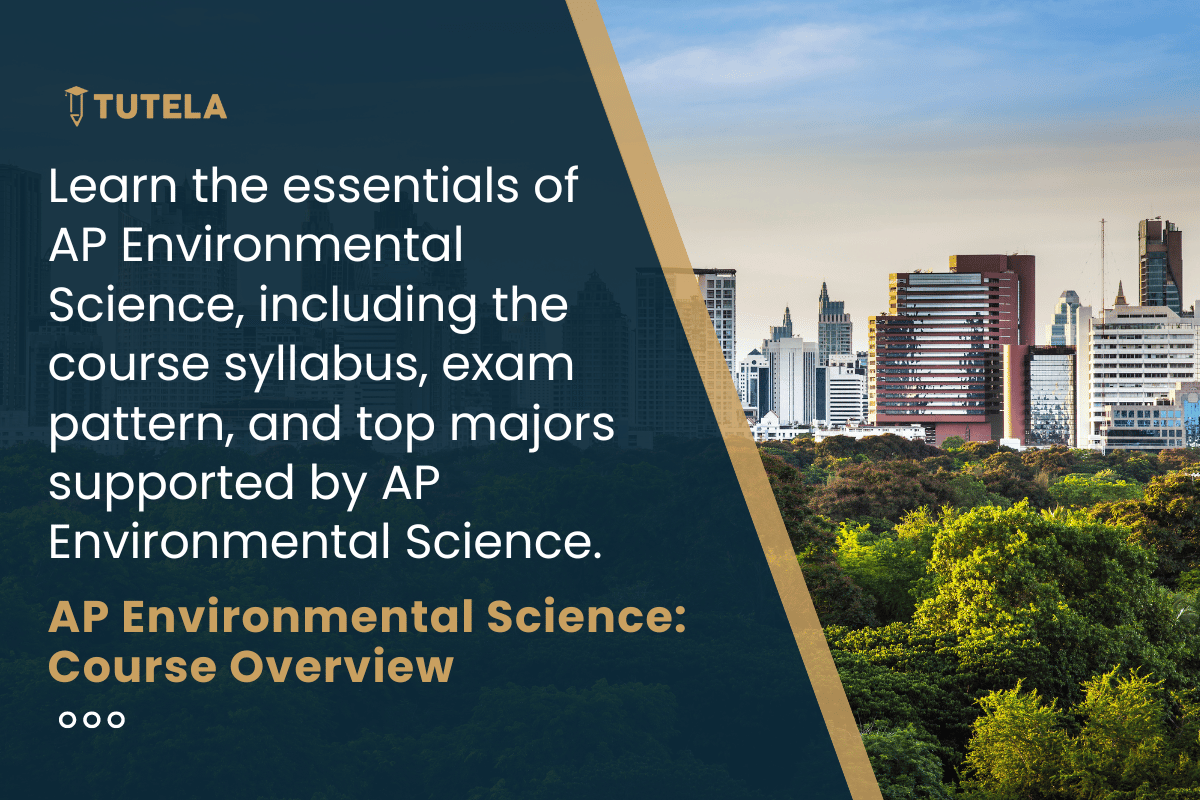
AP Environmental Science is a course that helps students understand the natural world and the environmental issues we face today. Whether you are interested in how ecosystems work, the impact of human activities on the environment, or ways to promote sustainability, AP Environmental Science offers valuable knowledge and skills for the modern world. To learn about the AP Biology syllabus, click here.
In today's world, awareness of climate change, pollution, and resource depletion is crucial. AP Environmental Science helps students develop critical thinking skills as they explore ecological principles, investigate environmental problems, and evaluate potential solutions. This course prepares students for college-level studies and helps them become informed citizens who can make responsible decisions about the environment.
| Unit Name | Topics Covered | Weightage in Exam |
| Unit 1: The Living World: Ecosystems |
|
6-8% |
| Unit 2: The Living World: Biodiversity |
|
6-8% |
| Unit 3: Populations |
|
10-15% |
| Unit 4: Earth Systems and Resources |
|
10-15% |
| Unit 5: Land and Water Use |
|
10-15% |
| Unit 6: Energy Resources and Consumption |
|
10-15% |
| Unit 7: Atmospheric Pollution |
|
7-10% |
| Unit 8: Aquatic and Terrestrial Pollution |
|
7-10% |
| Unit 9: Global Change |
|
15-20% |
The AP Environmental Science Exam structure is as follows:
Section I: Multiple-Choice Questions (MCQs)
Section II: Free-Response Questions (FRQs)
1. Environmental Science: A natural progression from AP Environmental Science, focusing on the study of environmental issues and solutions.
2. Ecology: Concentrating on the relationships between organisms and their environments.
3. Environmental Engineering: Applying engineering principles to improve and maintain the environment.
4. Sustainability Studies: Emphasizing sustainable practices and policies in various sectors.
5. Geology: Studying the Earth, its materials, and processes.
6. Marine Biology: Focusing on marine organisms and ecosystems.
7. Natural Resource Management: Managing natural resources sustainably.
8. Public Health: Addressing the environmental factors that impact human health.
9. Urban Planning: Designing and managing urban spaces with sustainability.
10. Renewable Energy: Developing and managing renewable energy sources.
AP Environmental Science is not just an academic subject but a vital field of study that prepares students to address some of our planet's most critical challenges. By understanding and engaging with the content of this course, students are well-prepared to pursue various scientific and policy-related careers that contribute to a more sustainable and environmentally conscious world. Whether planning to major in a related field or simply want to be more informed about environmental issues, AP Environmental Science offers a solid foundation and an invaluable perspective on the natural world and our place within it.
1. What are the main topics covered in the AP Environmental Science syllabus?
Ans: The AP Environmental Science syllabus covers a wide range of topics, including ecosystems, biodiversity, population dynamics, Earth systems and resources, land and water use, energy resources and consumption, atmospheric pollution, aquatic and terrestrial pollution, and global change.
2. How is the AP Environmental Science exam structured?
Ans: The AP Environmental Science exam consists of two sections: multiple-choice questions (MCQs) and free-response questions (FRQs). The MCQ section has 80 questions and lasts 90 minutes, covering 60% of the exam. The FRQ section includes 3 questions, lasts 70 minutes, and covers 40% of the exam, focusing on analyzing environmental problems and proposing solutions.
3. Why is AP Environmental Science important for students?
Ans: AP Environmental Science is crucial for students as it helps them understand ecological principles, investigate environmental issues, and evaluate solutions. This course prepares students for college-level studies, fosters critical thinking, and enables them to make informed decisions about environmental sustainability.
4. What are the potential career paths after studying AP Environmental Science?
Ans: Students who study AP Environmental Science can pursue various career paths, including environmental science, ecology, environmental engineering, sustainability studies, geology, marine biology, natural resource management, public health, urban planning, and renewable energy.
5. How can AP Environmental Science help in understanding and addressing global environmental challenges?
Ans: AP Environmental Science provides students with a solid foundation in understanding ecological principles, human impact on the environment, and sustainable practices. By engaging with the course content, students are equipped to address global environmental challenges such as climate change, pollution, and resource depletion, contributing to a more sustainable and environmentally conscious world.
TutelaPrep’s College Navigator allows students to search for colleges based on their preferred country and course. Not only that, it also provides valuable insights into each college’s specific admission requirements for those exams. Through College Navigator, you can even connect with alumni at your chosen colleges to get a firsthand feel for campus life and academics.
We hope this article helped you with the subject knowledge. Reach out to us by filling out our assistance form if you need any help with the preparations.